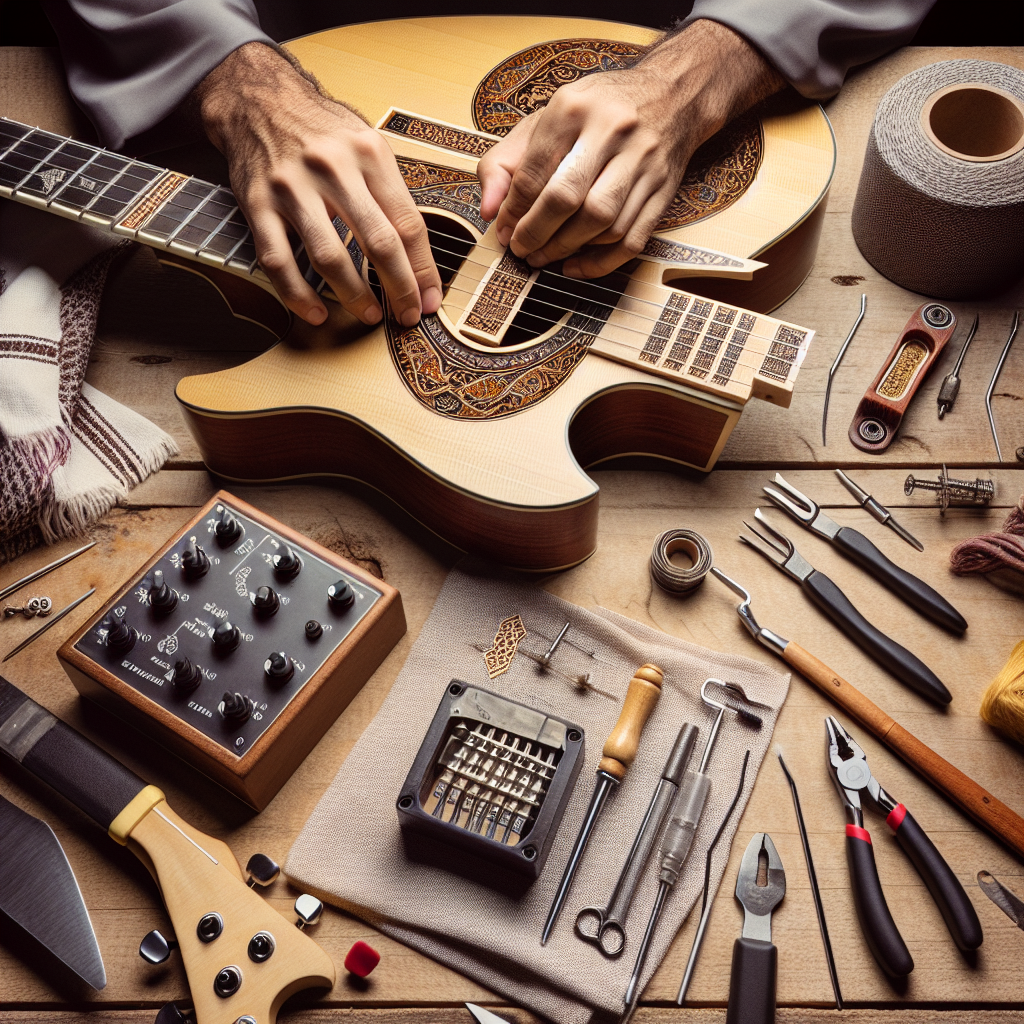
10 Essential Steps to Fit New Inlays on a Fretboard: A Complete Guide
Changing the inlays on your fretboard is a great way to personalize your guitar and make it truly unique. Whether you’re enhancing its aesthetic appeal or simply replacing worn-out inlays, knowing how to fit new inlays correctly is essential for any guitar enthusiast. This guide walks you through the process in ten essential steps to ensure your fretboard looks and feels exactly right.
Step 1: Gather Your Materials
Before starting, make sure you have all the necessary tools and materials at hand. This includes new inlays, a precision ruler, a fine-point pencil, a Dremel tool or routing device, inlay adhesive, and a small chisel. High-quality tools and materials are crucial to achieving a professional result, so check out trusted online sources like StewMac for any supplies you might need.
Step 2: Remove the Old Inlays
Carefully remove the old inlays using a small knife or chisel. Be gentle to avoid damaging the fretboard. If the inlays are glued tightly, some heat from a hairdryer can make the adhesive pliable. Applying even pressure helps prevent accidental chipping or gouging of the wood.
Step 3: Prepare the Inlay Slots
Once the old inlays are removed, gently sand the slots so they are smooth and free of any remaining adhesive. This ensures the new inlays will sit flush with the fretboard. It’s important to work slowly and check your progress frequently.
Step 4: Mark and Route New Designs
If the new inlays differ in size or shape from the old ones, mark the new outlines with a fine-point pencil. Use a Dremel tool to route the new slots, taking care to follow your markings precisely. Accuracy is key here, so work slowly and measure twice to avoid mistakes.
Step 5: Fit the New Inlays
Test fit your new inlays into the slots to ensure they are the correct size. They should fit snugly without being forced. If necessary, make minor adjustments with a file or sandpaper. Small gaps can result in weak or loose inlays, leading to potential problems down the line.
Frequently Asked Questions
- How do I choose the right material for my new inlays?
Guitar inlays come in various materials, including mother of pearl, abalone, and plastic. Choose a material that matches your desired aesthetic and complements your guitar’s overall design.
- Can I install inlays on any fretboard?
Most fretboards can accommodate new inlays, but always check the thickness and condition of your fretboard to ensure it can withstand the installation process.
- What if I make a mistake while routing?
If you accidentally remove too much wood, you might need to fill in the mistake with a matching wood filler before attempting the inlay again. Prevention is key, so take your time and measure carefully.
- Is professional installation recommended?
If you’re unsure or uncomfortable with any part of the process, seeking professional assistance can save time and prevent irreversible damage.
- How do I maintain my new inlays?
Regular cleaning with a soft cloth is usually sufficient to keep your inlays looking polished. Avoid using harsh chemicals that could damage the material.
- What’s the average cost for professional inlay installation?
Professional installation costs can vary widely depending on the complexity of your design and the materials used, typically ranging from $100 to several hundred dollars.
Step 6: Secure the Inlays
Apply a thin layer of inlay adhesive to the slot and carefully press each inlay into place. Use a clean rag to wipe away any excess glue that may seep out around the edges. Let the adhesive dry completely before proceeding to the next step.
Step 7: Level the Inlays with the Fretboard
Once the adhesive has cured, use fine-grit sandpaper to ensure the inlays are level with the fretboard surface. Sand delicately in small circular motions to avoid scratching or damaging the wood. This step is crucial for achieving a seamless look.
Step 8: Clean Up and Polish
After leveling, clean the fretboard with a guitar-safe cleaner. Polishing the inlays and fretboard with a soft, dry cloth will enhance the shine and aesthetics of your instrument.
Step 9: Restring the Guitar
With the inlays securely in place and the fretboard cleaned, restring your guitar. Tune it up and play to ensure everything feels and sounds as it should. Your new inlays should not interfere with the guitar’s playability or tone.
Step 10: Enjoy Your Personalized Instrument
Congratulations! You’ve successfully fitted new inlays on your fretboard. Enjoy the personalized touch these inlays bring to your instrument and the added satisfaction of having completed a DIY project.
The process of fitting new inlays requires patience and a careful hand, but the results are well worth the effort. Whether you’re a seasoned guitarist or a beginner keen to make your instrument more unique, this project enhances the visual appeal of your guitar and can renew your passion for playing. If you ever need more guidance or supplies, communities like r/Luthier on Reddit offer great advice and shared experiences from fellow guitar enthusiasts. Remember, the key to successful inlay work is taking your time, being precise, and enjoying the journey of customization!